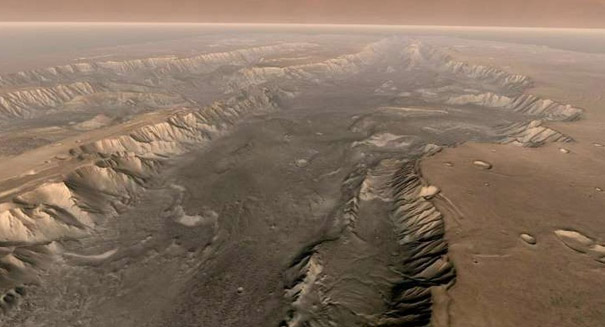
Cracks in Mars’ Gale Crater — which was filled with various lakes some 3.5 billion years ago — could reveal new clues about the planet’s ancient climate.
Early last year astronomers found evidence of what they believed to be desiccation cracks inside the crater, a finding they hoped could help give insight into how much water the planet once had. This new research, which comes from researchers at the California Institute of Technology, confirms and builds off of those findings.
“We are now confident that these are mudcracks,” said lead author Nathaniel Stein, a geologist at the California Institute of Technology in Pasadena, according to Science Daily. “The mudcracks show that the lakes in Gale Crater had gone through the same type of cycles that we see on Earth,”
Desiccation mudcracks only form in areas where wet sediment becomes exposed to the air. As a result, since the ones in the research were close to the center of an ancient lake bed, they suggest that Mars’ lakes rose and fell over time.
To study the cracks, the team analyzed a slab of rock nicknamed “Old Soaker.” The formation is crossed with polygons that are identical in appearance to desiccation features found on Earth. After taking a look at both the polygon’s physical and chemical compositions, researchers decided the cracks were formed by water.
That proves the formations came about from exposure to air, rather than alternate mechanisms like thermal or hydraulic fracturing.
Such information is important because, though scientists are almost positive the Gale Crater once contained lakes, the formations help astronomers better understand what the ancient system once looked like.
“We are capturing a moment in time,” added Stein. “This research is just a chapter in a story that Curiosity has been building since the beginning of its mission.”

